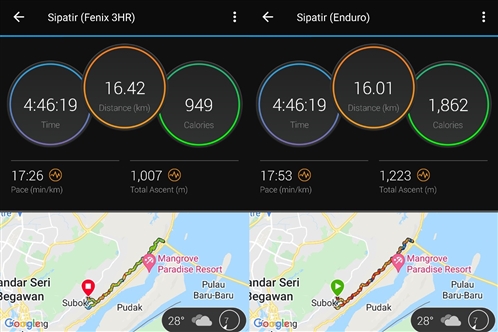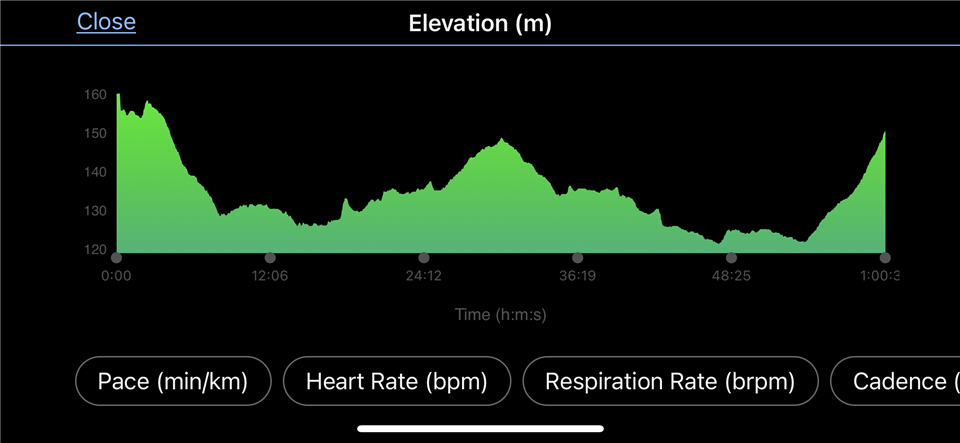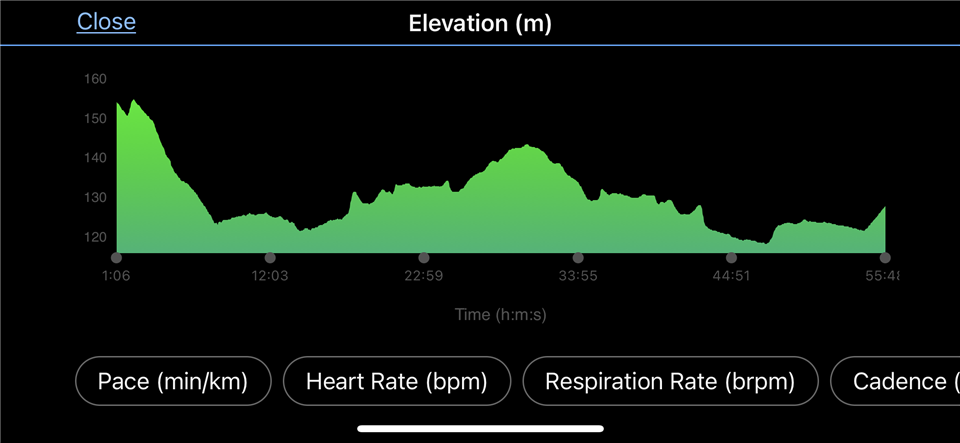
Earlier this year I returned my Enduro APAC model to Garmin because it consistently recorded significant elevation gains compared to my reference Fenix 3HR and also when compared to other Garmin models ranging from ForeRunner 935, Fenix 5, including Enduro. Comparisons were also made with Polar Vantage and several Coros models all which were very close to my Fenix 3HR. Months later Garmin sent me another Enduro APAC as part of warranty replacement.
After a 16km/2000m Elev Gain trail run, the second Enduro is doing the same thing. The F3HR recorded 1007m while the Enduro recorded 216m higher. Both watches set to GPS+GLONASS, Every Second recording, Manual Altimeter calibration to same starting altitude.
Am I just unlucky or does it have anything to do with the fact that something I turned off has affected the outcome of the barometric altimeter? I have a tendency to turn EVERYTHING I don't use to OFF including Bluetooth, Altimeter Auto CAL, etc. I've never heard of the barometer relying on another feature to functional properly. The Fenix 3HR has a very simple set of menu with almost nothing configurable other than Altimeter calibration and it just works accurately.



